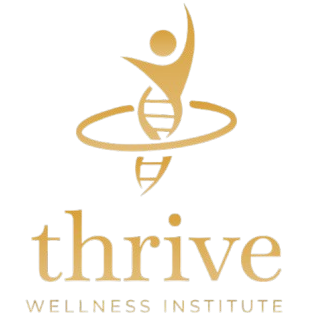What is taurine?
Taurine is a sulfur-containing amino acid (technically an amino sulfonic acid) found in high concentrations in the heart, brain, retina, skeletal muscle, and bile. Unlike “protein-building” amino acids, taurine isn’t incorporated into proteins; instead, it acts as a cellular stabilizer and signaling molecule that influences energy metabolism, ion balance, inflammation, and bile acid conjugation.
Mechanisms of action (why taurine matters)
- Osmolyte & membrane stabilizer: Helps cells maintain proper fluid balance and protects membranes under metabolic stress.
- Calcium handling & mitochondrial support: Modulates calcium flux in heart and skeletal muscle and supports mitochondrial function/ATP production—mechanisms tied to exercise capacity and fatigue resistance.
- Bile acid conjugation & metabolic signaling: Conjugates bile acids (e.g., taurocholate), shaping lipid absorption, microbiome composition, and FXR-mediated metabolic signaling.
- Immunomodulation & antioxidant effects: Taurine-derived chloramine can down-regulate NF-κB and MAPK pathways, tempering excessive inflammatory responses.
What does recent research show?
Aging & longevity
- A widely discussed 2023 Science paper reported that circulating taurine declines with age in animals and that supplementation extended lifespan in worms and mice and improved multiple healthspan markers in monkeys. This is provocative but not yet proof of human life-extension.
- Follow-ups highlight the promise and the uncertainty: Nature Aging’s perspective underscores taurine’s role in aging biology, while other analyses argue taurine may not be a reliable aging biomarker in humans—levels can remain stable or even rise later in life. Active, adequately powered human RCTs on aging outcomes are still needed.
- A registered clinical trial (6 months, 4 g/day) is now testing effects on biological aging in older adults. Results are pending.
Cardiovascular system
- Blood pressure: Meta-analytic and review data indicate taurine can lower systolic blood pressure and improve vascular function; an earlier RCT also showed ambulatory BP reductions in people with high-normal BP.
- Heart failure: Evidence syntheses report improvements in left ventricular ejection fraction and NYHA class with taurine as adjunctive therapy, though large modern RCTs remain limited.
- New human data: A 12-week study in 2025 reported improved blood pressure and vascular function with taurine supplementation. (Encouraging, but replication is needed.) ScienceDirect
Metabolic health
- A 2024 systematic review and meta-analysis of RCTs found taurine reduced risk factors for metabolic syndrome (e.g., fasting glucose, lipids, BP).
- Long-term human supplementation (notably 3 g/day) has been associated with reductions in HbA1c and fasting glucose and better insulin sensitivity in people with obesity.
Muscle, exercise & recovery
- Mechanistically, taurine supports excitation–contraction coupling, mitochondrial function, and may reduce exercise-induced oxidative stress. Human performance data show small, context-dependent benefits (dose, training status, and protocol matter). Recent meta-analyses suggest modest improvements in endurance or recovery, but findings are mixed.
Brain & cognition
- Taurine is abundant in the brain and influences GABAergic/glutamatergic tone, but current human evidence does not show consistent cognitive enhancement. A recent evidence review notes no overall cognitive benefit across trials to date. A
Liver, gut & bile
- By conjugating bile acids and modulating FXR-related signaling, taurine can influence lipid handling, microbiome balance, and hepatic resilience—mechanisms relevant to NAFLD/MASLD risk and digestive health. Human outcome trials are still catching up.
Practical guidance at Thrive
Who might consider taurine?
Adults seeking support for cardiometabolic health (blood pressure, lipids, insulin sensitivity), exercise recovery, or general cellular resilience—especially if dietary taurine intake is low (e.g., vegan/vegetarian diets are typically low in taurine).
Typical supplemental range in studies:
- 1–3 g/day divided doses is the most common range in human research, with some protocols using up to 4–6 g/day short term under supervision. Safety authorities and reviews generally consider ≤3 g/day long-term as well-tolerated for healthy adults. Always individualize based on medications, comorbidities, and lab data.
Sourcing & quality:
We dispense through Fullscript to ensure third-party-tested, professional-grade taurine with clear labeling and lot-specific quality controls.
Pairing with other nutrients:
Depending on goals, taurine can be combined with magnesium (BP/vascular tone), omega-3s (lipids/inflammation), or creatine (muscle/energy). For liver-metabolic support, pairing with glycine/NAC targets glutathione and methylation. (We tailor stacks case-by-case.)
Safety, interactions & who should avoid it
- Overall safety: Taurine has an excellent safety profile in adults at typical study doses. (Not the same as “energy drinks,” which add caffeine and sugars.)
- Special populations: There’s limited pregnancy/lactation data—avoid unless specifically advised. Use caution in pediatric populations.
- Medications & conditions: Monitor if you’re on antihypertensives (BP may drop further), diuretics (electrolytes), or have significant renal issues.
- Regulatory perspective: EFSA continues to treat taurine as safe in its intended uses; broader amino-acid safety work supports establishing practical intake ranges, though no official UL is set for taurine specifically.
The bottom line
Taurine is a multi-functional, conditionally essential amino acid with compelling mechanistic biology and increasingly positive human data—especially for blood pressure, vascular function, and metabolic syndrome risk factors. Claims about anti-aging in humans are promising but premature; definitive evidence awaits ongoing randomized trials. If taurine fits your health goals, we’ll personalize the dose, integrate it with your nutrition and training plan, and monitor outcomes (BP, lipids, HbA1c, body composition, and performance metrics).
References (recent & representative)
- Yadav VK et al. Science. 2023: Taurine levels decline with age in animals; supplementation improved lifespan/healthspan in model organisms.
- Nature Aging commentary on taurine and aging biology. 2023. Nature
- NIH research note questioning taurine as a human aging biomarker (levels not uniformly declining with age). 2025.
- Clinical trial underway: 4 g/day taurine for 6 months to test biological aging endpoints in older adults (NCT06613542). 2025.
- Metabolic syndrome: Systematic reviews/meta-analyses of RCTs showing improvements in MetS components (2024).
- Glycemia/insulin sensitivity: Long-term taurine (up to 3 g/day) associated with lower HbA1c and HOMA-IR in obesity. 2024–2025.
- Cardiovascular: Reviews/meta-analyses showing reductions in SBP/DBP and improved cardiac function/NYHA class; includes open-access review. 2024.
- Blood pressure RCT: Taurine lowered ambulatory BP in high-normal BP. Hypertension. 2016.
- New human vascular study: 12-week taurine improved BP and vascular measures (2025).
- Mechanisms: Taurine as osmolyte/muscle-mitochondrial support and anti-inflammatory signaling via taurine-chloramine; bile acid conjugation & FXR pathways.
- Safety frameworks: EFSA overview on nutrient ULs (2025 update); amino-acid safety review toward practical upper intakes.

